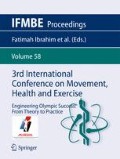Abstract
Wheezes are acoustic, adventitious, continues and high pitch pulmonary sounds produce due to airway obstruction, these sounds mostly exist in pneumonia and asthma patients. Artificial intelligence techniques have been extensively used for wheeze sound analysis to diagnose patient. The available literature has not yet been reviewed. In this article most recent and relevant 12 studies, from different databases related to artificial inelegance techniques for wheeze detection has been selected for detailed review. It has been noticed that now trend is going to increase in this area, for personal assistance and continues monitoring of patient health. The literature reveals that 1) wheezes signals have enough information for the classification of patients according to disease severity level and type of disease, 2) significant work is required for identification of severity level of airway obstruction and pathology differentiation.
Access this chapter
Tax calculation will be finalised at checkout
Purchases are for personal use only
Preview
Unable to display preview. Download preview PDF.
References
WHO., W. H. O.
Meslier, N., Charbonneau, G., and Racineux, J. L. (1995) Wheezes, Eur Respir J 8, 1942-1948.
Palaniappan, R., Sundaraj, K., and Ahamed, N. U. (2013) Machine learning in lung sound analysis: A systematic review, Biocybernetics and Biomedical Engineering 33, 129-135.
Taplidou, S. A., and Hadjileontiadis, L. J. (2010) Analysis of wheezes using wavelet higher order spectral features, IEEE Trans Biomed Eng 57, 1596-1610.
Wisniewski, M., and Zielinski, T. P. (2015) Joint application of audio spectral envelope and tonality index in an e-asthma monitoring system, IEEE J Biomed Health Inform 19, 1009-1018.
Taplidou, S. A., and Hadjileontiadis, L. J. (2007) Nonlinear analysis of wheezes using wavelet bicoherence, Comput Biol Med 37, 563-570.
Bahoura, M. (2009) Pattern recognition methods applied to respiratory sounds classification into normal and wheeze classes, Comput Biol Med 39, 824-843.
Bahoura, M., and Pelletier, C. (2004) Respiratory sounds classification using Gaussian mixture models, Electrical and Computer Engineering, 2-5.
Bahoura, M., and Pelletier, C. (2003) New parameters for respiratory sound classification, In Canadian Conference on Electrical and Computer Engineering, 2003. IEEE CCECE 2003., pp 1457-1460 vol.1453.
Mazić, I., Bonković, M., and Džaja, B. (2015) Two-level coarse-to-fine classification algorithm for asthma wheezing recognition in children’s respiratory sounds, Biomedical Signal Processing and Control 21, 105-118.
Oud, M., Dooijes, E. H., and van der Zee, J. S. (2000) Asthmatic airways obstruction assessment based on detailed analysis of respiratory sound spectra, IEEE Trans Biomed Eng 47, 1450-1455.
Oud, M. (2003) Lung function interpolation by means of neural-network-supported analysis of respiration sounds, Med Eng Phys 25, 309-316.
Wisniewski, M., and Zielinski, T. P. (2012) MRMR-based feature selection for automatic asthma wheezes recognition, In Signals and Electronic Systems (ICSES), 2012 International Conference on, pp 1-5, IEEE.
Wisniewski, M., and Zielinski, T. P. (2012) Tonality detection methods for wheezes recognition system, In 2012 19th International Conference on Systems, Signals and Image Processing (IWSSIP), pp 472-475.
Wisniewski, M., and Zielinski, T. P. (2011) Application of Tonal Index to pulmonary wheezes detection in asthma monitoring, In Signal Processing Conference, 2011 19th European, pp 1544-1548, IEEE.
Author information
Authors and Affiliations
Corresponding author
Editor information
Editors and Affiliations
Rights and permissions
Copyright information
© 2017 Springer Nature Singapore Pte Ltd.
About this paper
Cite this paper
Nabi, F.G., Sundaraj, K., Kiang, L.C., Palaniappan, R., Sundaraj, S., Ahamed, N.U. (2017). Artificial Intelligence Techniques Used for Wheeze Sounds Analysis: Review. In: Ibrahim, F., Cheong, J., Usman, J., Ahmad, M., Razman, R., Selvanayagam, V. (eds) 3rd International Conference on Movement, Health and Exercise. MoHE 2016. IFMBE Proceedings, vol 58. Springer, Singapore. https://doi.org/10.1007/978-981-10-3737-5_8
Download citation
DOI: https://doi.org/10.1007/978-981-10-3737-5_8
Published:
Publisher Name: Springer, Singapore
Print ISBN: 978-981-10-3736-8
Online ISBN: 978-981-10-3737-5
eBook Packages: EngineeringEngineering (R0)

